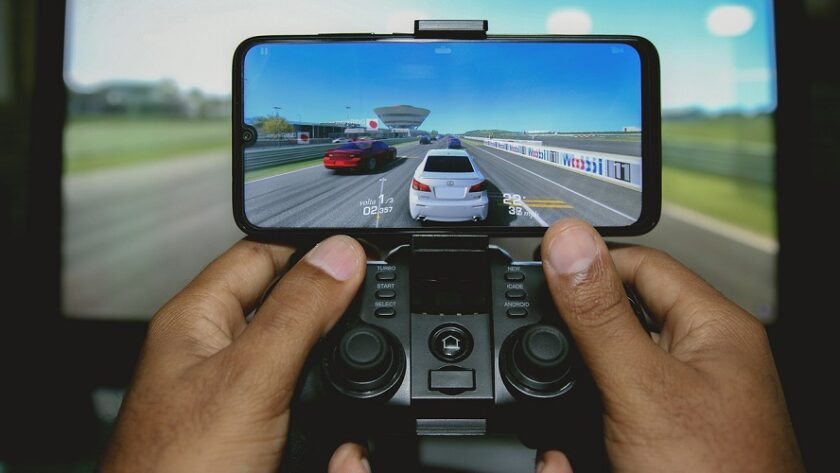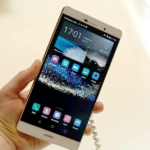The early noughties, and in general the period until 2014, can be called the time of existence of portable gaming consoles. The PlayStation Portable and Nintendo DS were delightful consoles. The PSP allowed you to play games with stunning graphics anywhere. If you also installed the game on a memory card, you could get 6-7 hours of battery life.
However, Android smartphones have completely “killed” this category of products. People were simply not ready to pay a lot of extra money when they already have a smartphone. Yes, the games there were originally not as beautiful and elaborate, but you can get by on the road. But it was cheap.
In a desperate attempt to ride the wave, Sony came up with the Xperia Play smartphone set-top box. However, there was no continuation of the series.
Android and iOS smartphones did an excellent job as portable gaming consoles. Most of the games in the app store were simple. But first, the pocket entertainment does not particularly require technically complex games. Secondly, the user himself is not ready to get into it. I wanted something simple. Games like Candy Crush flourished on smartphones. Although the game was introduced back in 2012, it still continues to actively earn, bringing its creators more than 100 million dollars a month in revenue.
Due to the emerging trends with cloud streaming, as well as lockdowns, the “high” gaming market has been lit up again. Many companies are actively investing in marketing campaigns to popularize gaming. And there will only be more to come, because all the key players in the market, in one way or another, have invested in the gaming sphere. Microsoft has bought up dozens of gaming studios, launched its streaming service, and even Windows 11 is trying to sell as an OS for gamers. Google, Nvidia, Amazon, and soon Netflix are actively developing the concept of cloud gaming. And even the general public has heard rumors that the Sony PlayStation 5 has been in short supply for months, which provokes interest: rarities always attract attention.
By the way, it should be mentioned that there is a demand for high-end games on the part of Android users. Just take Genshin Impact or Roblox. And major game studios are actively developing on the smartphone market. Activision created Call Of Duty Mobile. Today, one of the most popular first-person shooters in the world. Square Enix offers to play Chaos Rings III, which is called one of the most demanding in terms of graphics, and Epic Games is pleased with the success of mobile Fortnite.
There’s a steady community of gamers who care about device performance and support around games like this (you may recall the outcry when Apple removed Fortnite).
All this made it possible to revive the idea of gaming consoles/smartphones. For now, gaming smartphones are a narrow niche in which bright players can be counted on the fingers of one hand. For example, the ASUS ROG Phone. Another smartphone that comes to mind is the BlackShark gaming smartphone from Xiaomi. And Lenovo Legion.
The other manufacturers prefer to just make flagships. Quite rightly believing that any flagship smartphone is gaming by default. However, they also think about gaming.
A striking example is Samsung, which not only attracted AMD as an assistant to create its chipsets, but is also trying to adapt for mobile platforms technology from PC. Thus, the future Exynos 2200 chipset from Samsung, according to leaks, will support ray tracing technology. Is it needed on devices with a screen up to 7 inches? Probably not. But it is an extra opportunity to emphasize that smartphones are not inferior to computers or consoles.
In the near future we are going to have a succession of Android game consoles. More and more rumors and leaks testify to this.
So, the fact that Qualcomm is extremely interested in the sphere of games, it was clear when in 2019, introducing new chipsets, the company told about the possibility to update the drivers of GPU-accelerators. That’s not to say the idea went viral, but smartphones from Xiaomi were getting video gas pedal driver updates.
This spring, Qualcomm took the next step. The company leaked that it was creating a reference gaming device that looked similar to the Nintendo Switch. Obviously, Qualcomm is not going to sell handheld consoles. The samples are only for demonstration to other smartphone manufacturers as something that can be done.
In August of this year, it was revealed from Samsung’s quarterly report that the company plans to release a dedicated gaming device by the end of the year.
And the other day a leak from Lenovo’s website hit the Internet. The site posted and then quickly removed a picture of the console, made under the brand name Legion. The pictures show that this is an Android device, although the interface, of course, is highly customizable. The console has two sticks, a Type-C port and a headphone jack.
And the description text says that the gadget, called Lenovo Legion Play, is designed for AAA gaming and is the first cloud-based Android gaming solution. The screen is 7 inches, HDR10, battery 7000 mAh. Apparently, the console is in near-ready condition, as it was supposed to be unveiled at the failed MWC in July.
Unfortunately, the launch of new gaming gadgets is affected by a shortage of chipsets on the market. But it is likely that in 2022 there will already be several specialized gaming consoles (perhaps even without ringers, but with mobile Internet support) on Android, which will be grounded on cloud streaming and Google Play Pass.
Finally, I anticipate that I will be blamed for ignoring the existing Android handheld consoles, which are available in assortment on AliExpress.
I answer right away, that these consoles are suitable only for balloons. In this niche, there are also numerous manufacturers of accessories that allow you to turn your smartphone into a console.
So a question for you, dear readers. Do you see a niche for a handheld game console like the PSP or Nintendo 3DS in 2021? Or do you think that the train has already left and the standalone handheld gaming gadget has lost its value?
When giving your answer, keep in mind two attempts from well-known manufacturers, one successful, the other not. Valve’s Steam Deck is a successful example. Pre-orders are sold out, the market hype and excitement. Although you could just buy a computer or laptop and play the same games.



